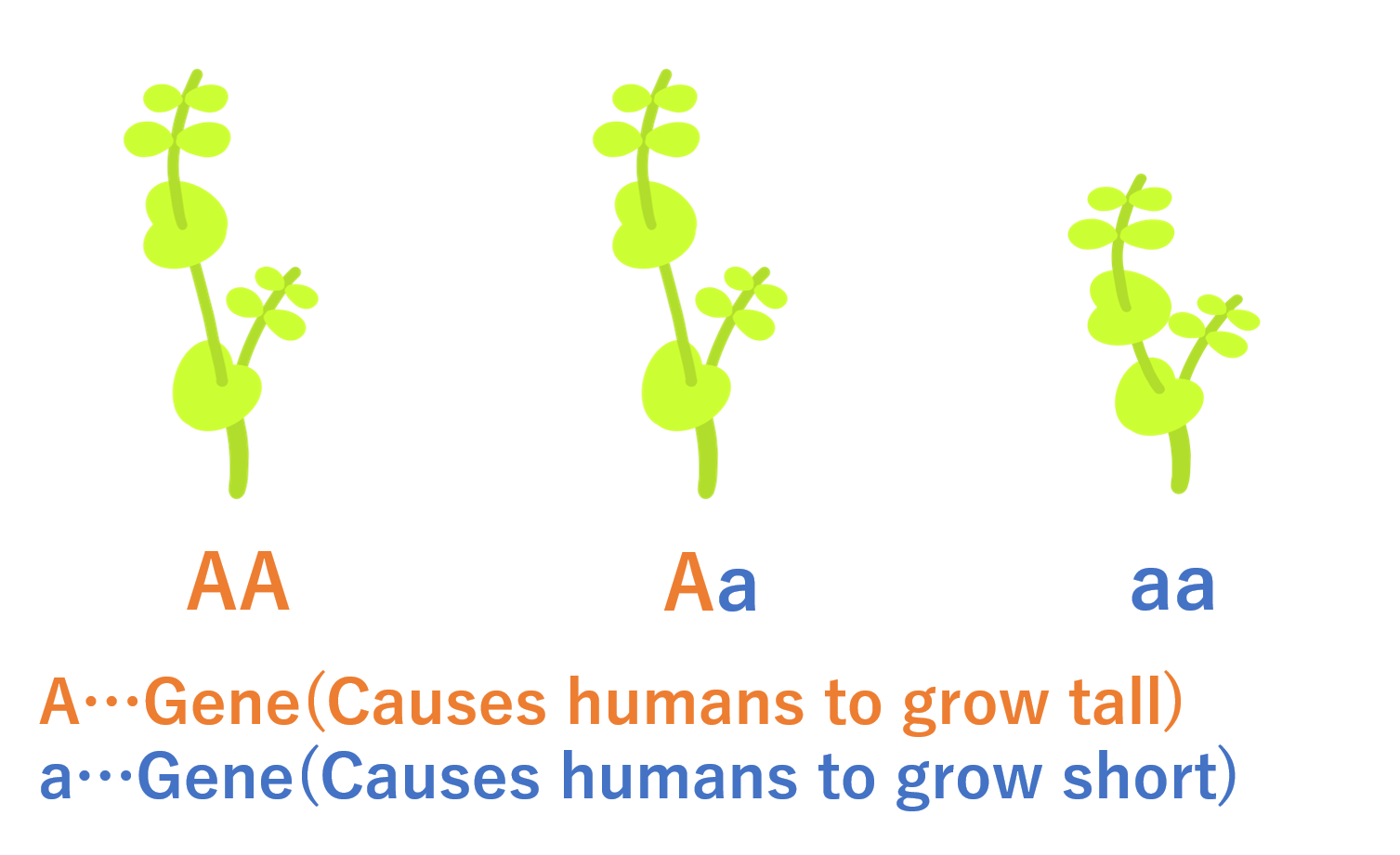Mendel's Laws -The Basic Laws of Heredity-
So far, we have looked at genes and DNA, which are the basis of heredity. Now let's take a look at how heredity actually works.
So far, we have looked at genes and DNA, which are the basis of heredity. Now let's take a look at how heredity actually works.
Mendel, who was a Czech priest, was curious about how heredity works and thought that some kind of grain determines heredity. So he conducted an experiment with peas in the monastery garden. By self-pollinating, harvesting, and sowing the seeds several times, he succeeded in harvesting seeds that were always taller and seeds that were always shorter. (Such a strain whose characteristics (traits) do not change from one generation to the next is called a pure strain.)

Mendel then crossed a pure line of tall genes with a pure line of short genes. This resulted in all the peas being tall. From this result, Mendel discovered the law of dominance. In this case, the traits that make the plants taller are dominant and the traits that make them shorter are recessive. The law of dominance is based on the relationship between the "taller" gene and the "shorter" gene (such a relationship is called an "allele"). The law of dominance refers to the expression of dominant genes, such as the "taller" gene, among the "shorter" genes.

Mendel also crossed peas with tall peas and short peas with tall peas. This resulted in a ratio of tall peas to short peas of about 3:1. Mendel did the same experiment with seeds that were not only different in height, but also in wrinkling and color. The results were the same: approximately 3:1 (1:3).

Let's say the dominant gene is A and the recessive gene is a. Then, since the parents' genes are a cross between a pure strain and a pure strain (AA and aa), they should both be Aa. When these genes are multiplied, as shown in the above figure, the ratio of dominant to recessive traits is 3:1. This separation of genes (meiosis) into separate germ cells is called the law of segregation.
In addition, the height of the plant, the color of the seeds, and the presence or absence of wrinkles on the seeds are not related to each other and are inherited independently. This is called the law of independence. However, although the laws of inheritance discovered by Mendel are basic, they can only be followed under special conditions. The actual way of inheritance is more complicated.
It was Mendel, a priest, who laid the foundation for the current heredity. When he first announced this discovery, it did not receive much attention, but it gradually gained more and more attention.
 | It wouldn't be an exaggeration to say that Dr. Mendel laid the groundwork for the foundation of today's biomedicine! |
|---|

この作品はクリエイティブ・コモンズ 表示 - 非営利 - 継承 4.0 国際 ライセンスの下に提供されています。